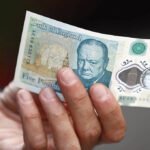The euro’s relentless rise is shaking up Cuba’s informal market as of this Friday morning, with its value climbing from 486 to 490 Cuban Pesos (CUP). This four-peso increase marks a new record and brings the European currency dangerously close to the 500-peso threshold, a milestone that many fear could spell disaster for the already struggling Cuban peso. The precarious state of the national economy stands to worsen should this rate be surpassed.
Meanwhile, the U.S. dollar has held steady at 430 CUP since Thursday, maintaining a substantial 60-peso gap from its European counterpart. The Freely Convertible Currency (MLC), known for its recent volatility, remains at 210 CUP, where it settled after a recent climb.
Exchange Rates on September 26, 2025 – 7:15 a.m. in Cuba:
– USD to CUP: 430 CUP
– EUR to CUP: 490 CUP
– MLC to CUP: 210 CUP
Euro Takes the Lead in Cuba’s 2025 Informal Market
Throughout 2025, the euro has emerged as the most rapidly appreciating currency on Cuba’s informal market. As the Cuban peso continues to lose value, many Cubans turn to the euro as a safer store of value. On January 1, 2025, the euro was priced at 310 CUP. Fast forward nine months, and it has surged by 180 CUP to the current 490 CUP, underscoring the peso’s rapid devaluation.
Factors Fueling the Euro’s Ascent
The rising euro can be attributed to several interconnected factors. A significant driver is the soaring demand for strong foreign currencies amidst rampant inflation and diminishing wages. The euro has become a safe haven not only for those receiving remittances from Europe but also for individuals needing to travel or conduct transactions related to the continent.
The limited supply of euros on the streets further exacerbates the situation. Unlike the more readily available U.S. dollars, thanks to remittances from the United States, euros remain scarce, pushing their price higher. Additionally, widespread distrust of the CUP and speculative behavior in the market, where many buy in anticipation of further increases, contribute to the euro’s steep climb.
Consequences for Everyday Life
The euro’s rise is having a direct impact on Cuban households. As wages and pensions paid in pesos lose purchasing power rapidly, the cost of goods and services pegged to foreign currencies—from technology to medications and airfare—continue to soar. Those relying on CUP incomes find their purchasing power severely diminished, while individuals receiving euro-denominated remittances see their funds gaining in value, widening socioeconomic disparities.
Comparative Analysis: Dollar and MLC
Though the dollar has also appreciated, its increase has been less pronounced compared to the euro. In several instances, while the dollar remained stable or dipped slightly, the euro continued its upward trajectory. The MLC has shown greater volatility, with intermittent declines, reinforcing the preference for the European currency.
In this climate, the euro has become the primary indicator of the informal economy’s health, partially overtaking the dollar as a pricing benchmark in certain transactions. The trend suggests that the euro will maintain high levels, potentially setting new records by year’s end. Without effective monetary reforms or increased availability of foreign currencies through official channels, the euro will likely remain a safe asset against the failing CUP.
Currently, all signs point to the euro leading the charge in Cuba’s informal market, highlighting the severity of the currency crisis and the irreversible erosion of the peso’s legitimacy as legal tender.
Equivalent USD to CUP Exchange Rates as of September 26:
– 1 USD = 430 CUP
– 5 USD = 2,150 CUP
– 10 USD = 4,300 CUP
– 20 USD = 8,600 CUP
– 50 USD = 21,500 CUP
– 100 USD = 43,000 CUP
Equivalent EUR to CUP Exchange Rates:
– 1 EUR = 490 CUP
– 5 EUR = 2,450 CUP
– 10 EUR = 4,900 CUP
– 20 EUR = 9,800 CUP
– 50 EUR = 24,500 CUP
– 100 EUR = 49,000 CUP
– 200 EUR = 98,000 CUP
– 500 EUR = 245,000 CUP
In July, Manuel Marrero announced upcoming changes in Cuba’s official currency exchange market, slated for implementation in the second half of the year. However, as of now, no updates have been provided. Earlier this month, the Cuban regime reported that the average monthly salary had increased to 6,649 pesos in the first half of 2025, a 16.4% rise over the previous year’s period. This statistic, shared by the National Office of Statistics and Information (ONEI) and echoed by Cubadebate, was presented as a positive economic indicator.
Yet, this increase offers little relief to the population amidst a severe inflation crisis and the continued depreciation of the Cuban peso. The stark reality is that, given the informal market rate, the dollar stands at 410 CUP. As a result, the new average salary barely equates to about 16.22 dollars per month, insufficient for covering even basic needs.
FAQ on Cuba’s Currency Crisis
Why is the euro rising in Cuba’s informal market?
The euro’s rise is due to high demand for strong currencies amid inflation, limited euro supply, distrust in the CUP, and speculative buying.
How does the euro’s increase affect Cuban citizens?
The euro’s increase reduces the purchasing power of those earning in CUP, while those receiving remittances in euros benefit, widening social inequalities.
What is the current exchange rate for the euro in Cuba?
As of September 26, 2025, the euro is valued at 490 CUP in Cuba’s informal market.





















